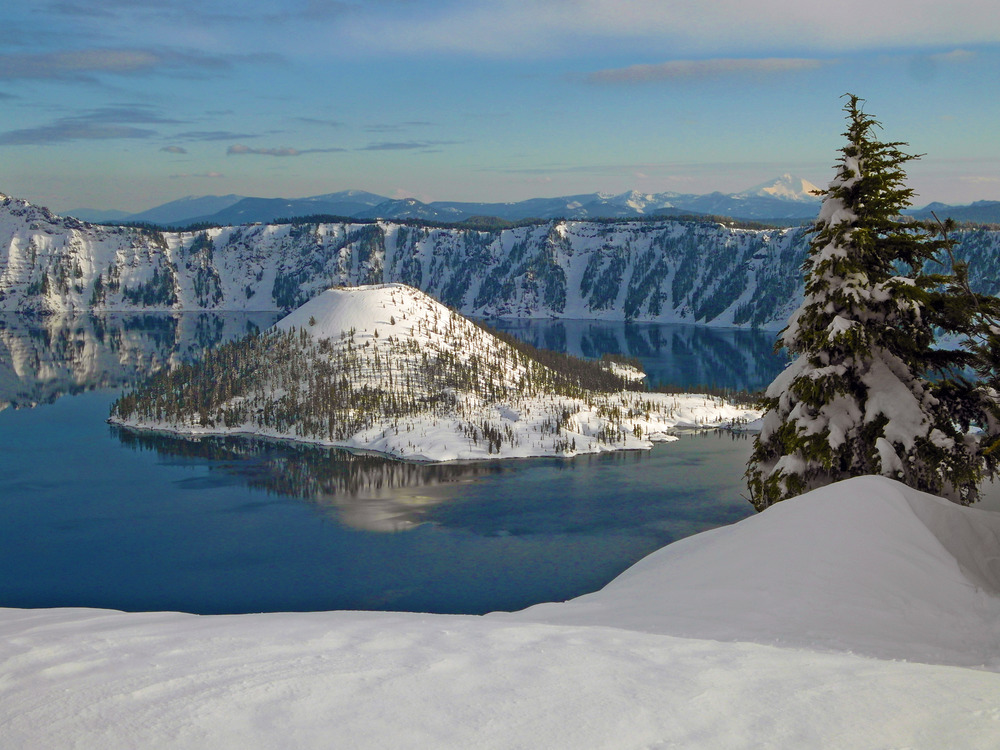
When it comes to big snowfall totals in the state of Oregon, two sites remain supreme for their heavy annual snowfall and greatest snow depth recorded at one time. These sites are Crater Lake National Park in southern Oregon and Timberline on Mt. Hood in northern Oregon.
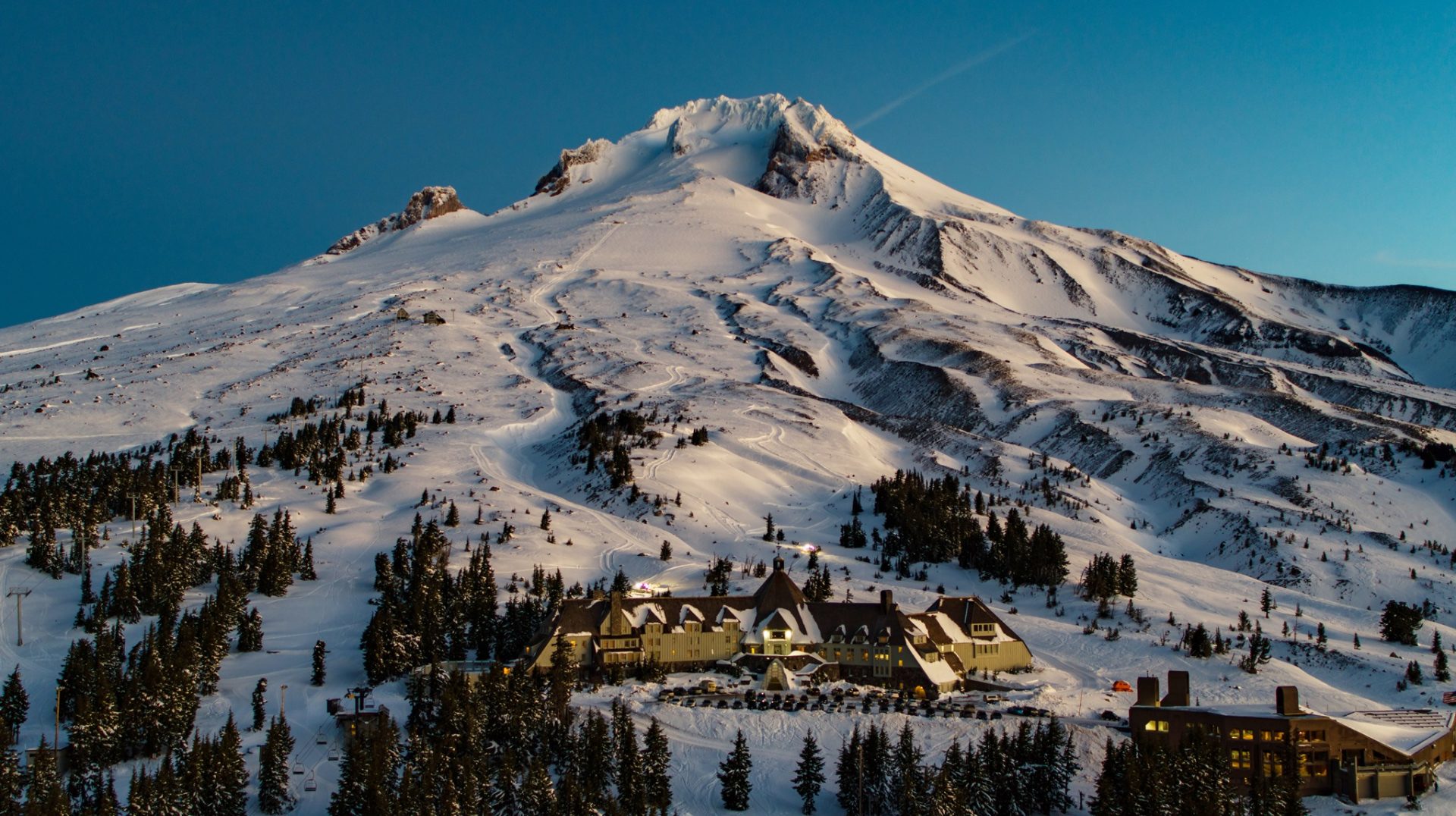
You might be asking why I chose these specific sites in Oregon. I chose these two locations because they have some of the most extensive history of recorded snowfall over the decades. Secondly, Crater Lake and Mt. Hood have precise measurement equipment at similar elevations. What also makes this a compelling comparison is that both of these volcanoes are perched on the crest of the Cascades. The two biggest differences are that Mt. Hood sits another 2,316 ft higher than Crater Lake in pure elevation. Also, the elevation at which snow is measured is slightly higher at Crater Lake HQ (6,450 ft) compared to the top of the Pucci chair lift (6,000 ft) on Mt. Hood (south side of the mountain).
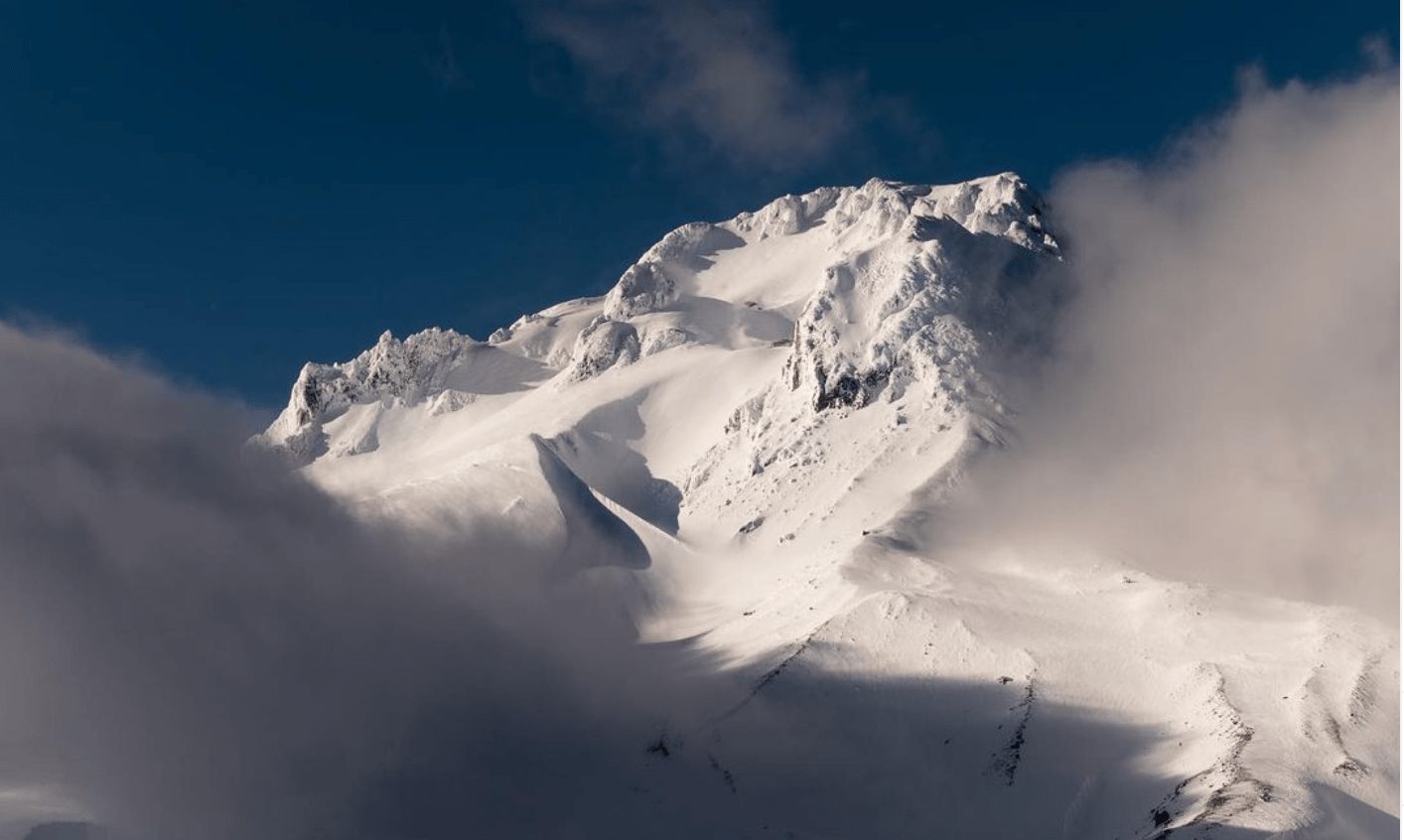
Before I transition into how these two legendary Cascade volcanoes truly stack up in terms of snowfall, let’s establish a solid baseline and understand these volcanoes’ elevation, coordinates, distance from the ocean, and where the snow is measured. We will start north and move south by beginning first with Mt. Hood (Wy’East), which sits at 11,245 ft (3,427 m). Its prominence is 7,706 ft (2,349 m). This volcano is approximately 155 miles east of the Pacific Ocean. The site where the snowfall is measured is at the top of the Pucci chair lift at around 6,000 ft.
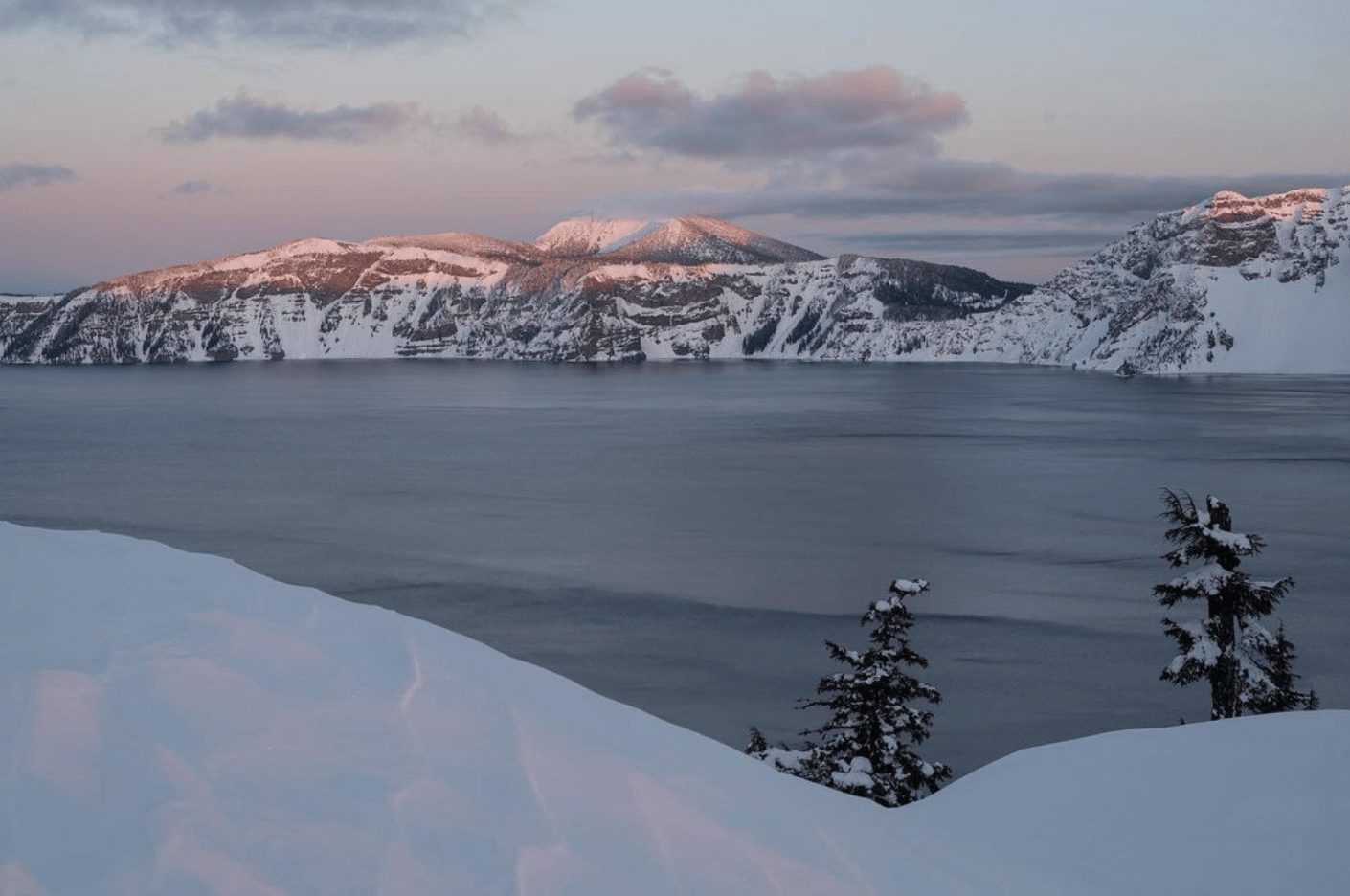
Next, we have Crater Lake National Park (ancestral Mt. Mazama), 240 miles south of Mt. Hood. Crater Lake’s average elevation is around 7,181 ft at the caldera’s rim. Its highest point along the rim is Hillman Peak at 8,151 ft, and Mt. Scott is the highest point in the park at 8,929 ft. This caldera is approximately 100 miles east of the Pacific Ocean. The recording site where snowfall is measured is at the Park Headquarters, which sits at 6,450 ft.
Now that you have a solid geography 101 of each Cascade volcano let’s shift forward and look at the historical snow data to see how they both measure up. To make this a well-rounded comparison. I will share various bits of snowfall data like deepest snow depth, largest total annual snowfall, lowest snow depth, and the baseline total snowfall average over the last 30 to 40 years.
1# – Deepest snow depth ( the amount of snow presently on the ground ). On April 3rd of 1983, an astounding 258 inches of snow (21.5 ft) was sitting on the ground at Crater Lake! On April 1st of 1999, there was a whopping 300-inch base (25 ft) on the ground at Timberline Lodge!
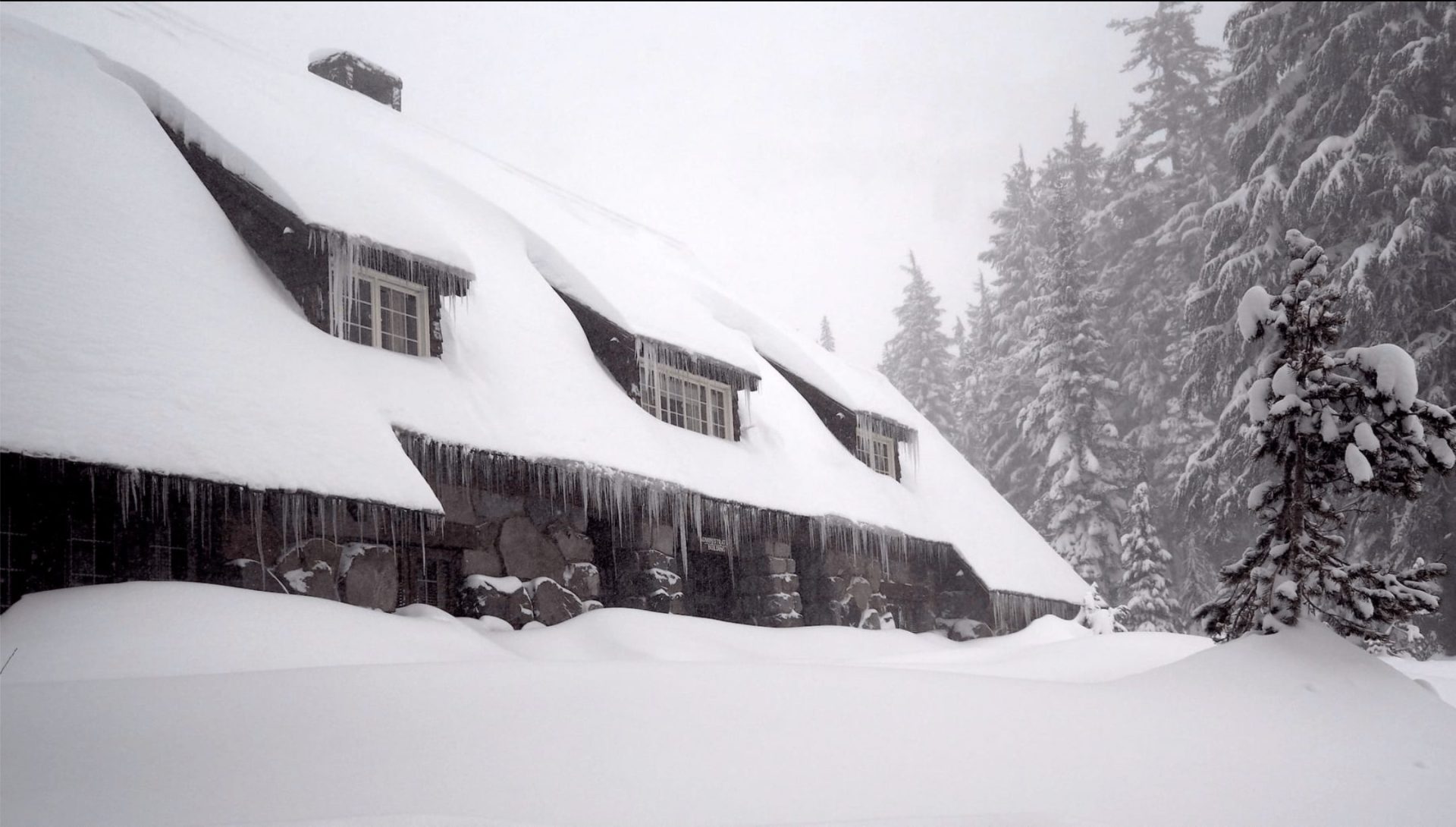
#2 – Lowest Snow depth – I could not locate any sound data that showcased the lowest-ever recorded snow depth at Crater Lake. However, I did come across a somewhat similar statistic regarding the snowfall for the winter season of 1991 – 1992. An abysmal 243 inches was recorded. For context, the park’s water year begins on July 1st and ends the following year on June 30th.
For Mt. Hood, the lowest-ever recorded snow depth was 19.7 inches on April 17th, 2015. To put this into perspective, that is 33% of the average. Secondly, April is typically when the snowpack peaks in the Cascades hence why specifically I chose this month for accuracy.
#3 – Greatest average annual snowfall over the past 40 years (1980 to present) – The average annual snowfall at Crater Lake over the past 40 years was 518 inches of total snowfall. So, how does this compare to Timberline at Mt. Hood? Well, the results are in and it averages around 500 inches of snowfall annually over the past 40 years. Please keep in mind that these are rough estimates. I hope this data gives you a solid baseline for how these two iconic volcanoes measure up.
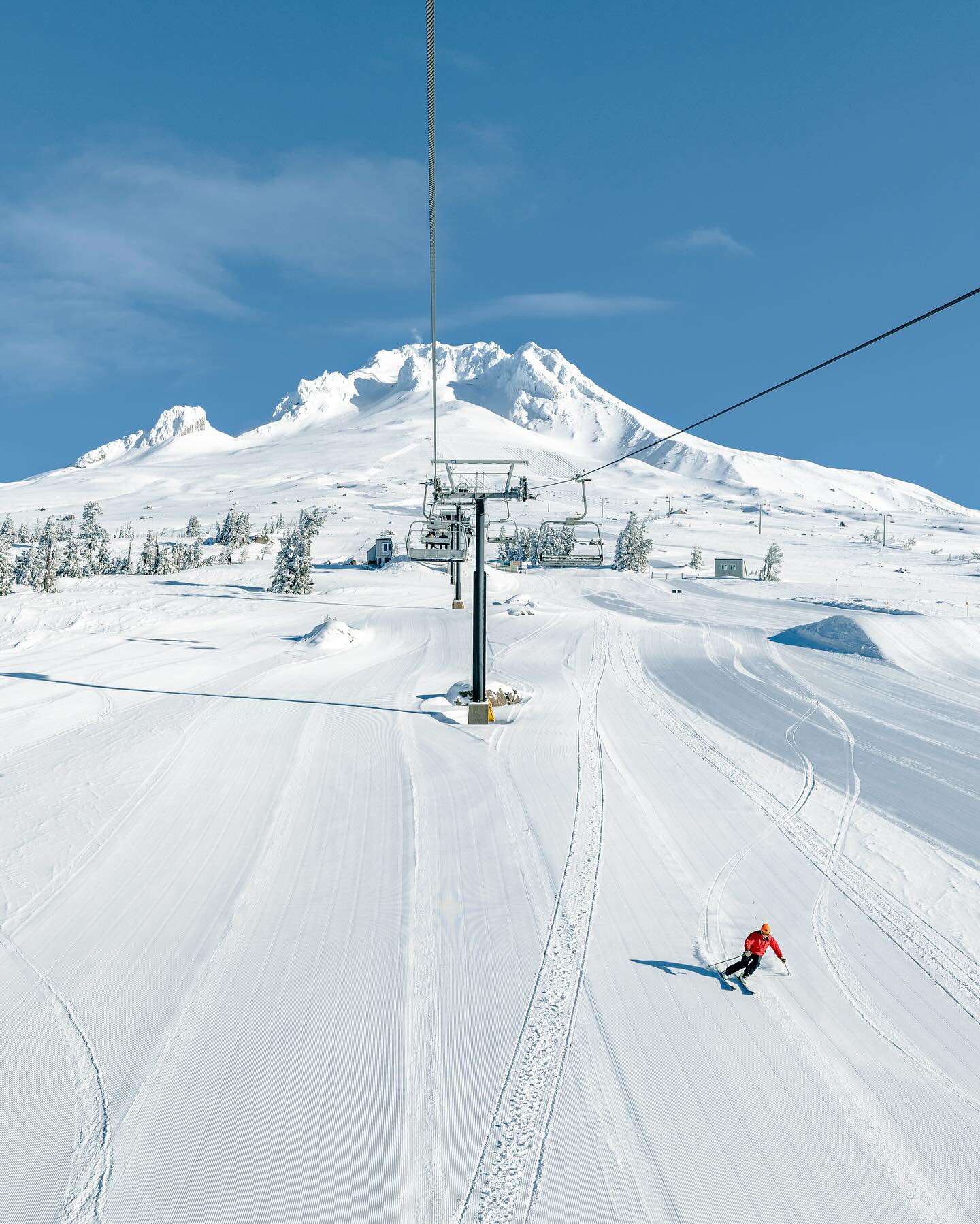
Additional Sources:
https://www.extremeweatherwatch.com/cities/crater-lake/most-yearly-snow
https://www.koin.com/news/oregon/4-feet-below-mt-hood-sees-worst-ski-season-start-in-34-years/
https://www.mthoodterritory.com/articles/timberline-lodge-and-ski-area–an-oregon-icon